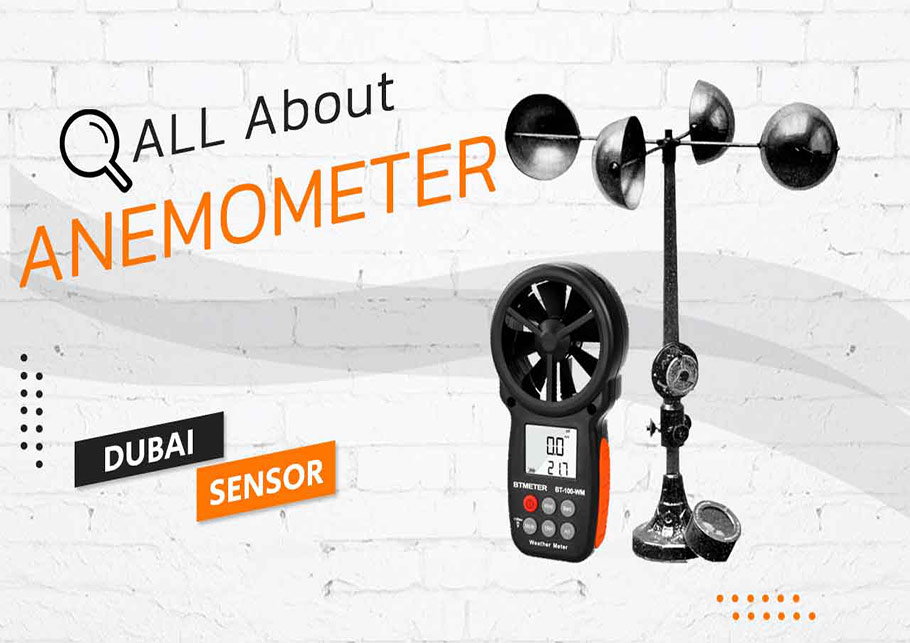Selecting the Right Anemometer: A Comprehensive Acquiring Guide
Selecting the Right Anemometer: A Comprehensive Acquiring Guide
Blog Article
All You Need to Understand About Anemometers: How They Function, Why They Issue, and Where to Make use of Them
Anemometers, however typically overlooked in the world of clinical tools, play a crucial function in numerous areas, supplying valuable understandings into wind speed and air flow patterns. Recognizing the technicians behind these gadgets is necessary for anyone seeking to harness the power of this information. From meteorologists tracking weather condition patterns to designers designing frameworks with wind tons in mind, the applications of anemometers are varied and far-reaching. As we look into the details of anemometer technology, we will certainly discover the inner operations of these devices, their value, and the crucial considerations when choosing the ideal anemometer for certain applications.

Anemometer Basics
An essential tool made use of to gauge wind speed and instructions, the anemometer plays a critical role in weather forecasting and various sectors. An anemometer typically is composed of three or four cups that turn in the wind, a vane that directs into the wind, and sensors to track the rotations or activities.
There are different sorts of anemometers offered, including cup anemometers, vane anemometers, hot-wire anemometers, and sonic anemometers, each with its unique features and applications. Mug anemometers are frequently utilized for fundamental wind speed measurements, while vane anemometers are chosen for directional measurements. Hot-wire anemometers appropriate for reduced airspeeds, and sonic anemometers are optimal for high-precision dimensions in research study and commercial settings. Understanding the basics of anemometers is essential for exact wind data collection and analysis throughout various sectors.
Principles of Anemometer Operation
Building on the fundamental understanding of anemometer essentials, the concepts of anemometer operation clarify the auto mechanics behind wind rate and direction measurements. Cup anemometers, for instance, have three or more cups that record the wind, creating them to spin much faster as the wind rate rises. Hot-wire anemometers depend on a heated cable that cools down as wind passes over it, with the rate of cooling establishing the wind rate.
Importance of Anemometers
Anemometers play a vital function in gauging wind speed and direction, giving essential information for climate forecasting, environment studies, ecological tracking, and air travel procedures. Meteorologists count on anemometers to gather exact wind information, aiding them comprehend weather patterns, anticipate tornados, and concern prompt cautions to the public. Wind ranch drivers make use of anemometers to examine wind conditions and optimize electrical energy manufacturing from wind turbines.
Applications Across Various Industries
Applications of anemometers cover across diverse sectors, showcasing their versatility and energy past weather forecasting. In the eco-friendly power sector, anemometers play an important role in assessing wind conditions for wind farm positionings, ensuring optimal power production. Industries like construction and mining make use of like it anemometers to keep track of wind rates, essential for safety procedures, particularly when working at elevations or in open-pit mines where solid winds can posture hazards. Anemometers are additionally integral in the air travel industry, helping pilots in comprehending airspeed and wind instructions for safe take-offs and landings. The maritime market take advantage of anemometers for ship navigation, aiding sailors anticipate climate modifications and readjust courses as necessary. In agriculture, anemometers help farmers in taking care of crop splashing by giving real-time information on wind rate to stay clear of drift. Anemometers discover applications in Cooling and heating systems to maximize air movement and boost power performance in structures. The diverse usage instances of anemometers emphasize their importance throughout numerous sectors, highlighting their indispensable duty in improving operational safety and efficiency (anemometer).

Picking the Right Anemometer for Your Demands
Choosing the proper anemometer customized to your particular demands is necessary for getting accurate wind rate and direction measurements. When selecting an anemometer, consider variables such as the desired application, called for dimension variety, ecological conditions, and preferred functions. For basic functions, a mug anemometer appropriates for gauging wind speed, while a vane anemometer provides wind direction data. Hot-wire anemometers are suitable for low airspeed dimensions, and ultrasonic anemometers supply high precision and durability.

Verdict
Finally, anemometers play a critical role in gauging wind speed and direction throughout different sectors. Recognizing the concepts of anemometer procedure is vital for from this source picking the right gadget for details requirements. From meteorology to aviation, anemometers are vital devices for gathering accurate data and ensuring safety and security in different applications. When picking the most appropriate gadget for determining wind conditions., it is vital to think about the importance of anemometers in order to make enlightened decisions.
There are different types of anemometers available, including mug anemometers, vane anemometers, hot-wire anemometers, and sonic anemometers, each with its unique attributes and applications. Mug anemometers are frequently made use of for fundamental wind rate dimensions, while vane anemometers are chosen for directional dimensions. Hot-wire anemometers are ideal for low airspeeds, and sonic anemometers are suitable for high-precision dimensions in research and industrial settings.Structure on the foundational understanding of anemometer basics, the concepts of anemometer operation elucidate the technicians behind wind rate and direction dimensions. For basic functions, a mug anemometer is ideal for determining wind speed, while a vane anemometer more helpful hints gives wind direction data.
Report this page